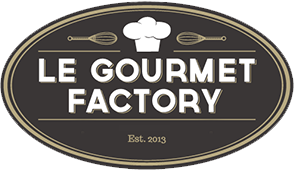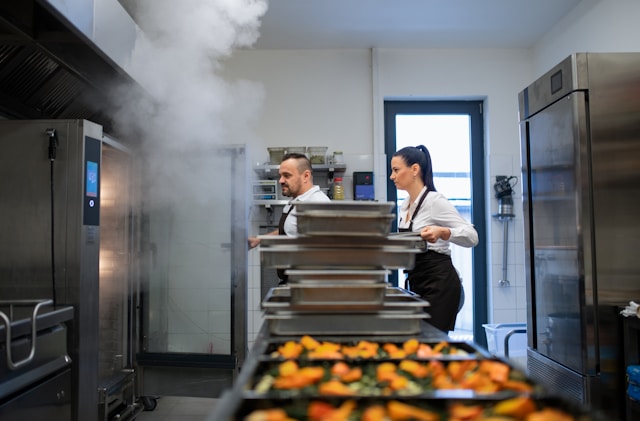Food Truck Setup: Building a Mobile Kitchen for Success
Master the art of food truck setup. From choosing equipment to creating efficient layouts, this guide covers everything you need for success.

Continue exploring the next articles in this series:
Discover food truck commissary costs and rentals. Learn about pricing, benefits, and tips for choosing the best facility to support…
Or navigate back to explore other related content :
Start your food truck business with confidence. Learn the essential steps, from planning and funding to branding and launching successfully.
Introduction
Setting up a food truck is more than assembling a mobile kitchen—it’s about creating a streamlined, efficient workspace that delivers quality food to your customers while meeting health and safety standards. From choosing the right truck to designing a functional layout and equipping your kitchen, every decision you make impacts your operations and customer satisfaction. This comprehensive guide will walk you through every detail of setting up your food truck, ensuring your business is poised for success.
01: Selecting the Perfect Food Truck
Buying vs. Leasing
One of your first decisions is whether to buy or lease a truck. Each option has its pros and cons:
- Buying: Purchasing a truck requires a larger upfront investment, typically $50,000 to $200,000. However, it allows for full customization and ownership.
- Leasing: Leasing offers lower upfront costs, making it ideal for first-time operators testing the market. On the downside, leases often limit your ability to modify the truck.
Key Considerations for Truck Selection
When choosing a truck, prioritize these factors:
- Mechanical Condition: Ensure the engine, brakes, and tires are reliable to avoid unexpected downtime.
- Interior Space: Verify that the truck’s size supports your kitchen layout and operational needs.
- Compliance: The truck must meet local safety, health, and zoning regulations.
02: Designing an Efficient Layout
Workflow Optimization
Efficiency is critical in a small workspace. Divide your kitchen into three key zones:
- Prep Zone: Dedicated space for washing, chopping, and prepping ingredients.
- Cooking Zone: Place grills, fryers, and stoves close together to minimize movement.
- Packaging and Serving Zone: Organize packaging supplies near the service window for easy access.
Space-Saving Solutions
Maximizing every inch of your truck ensures smoother operations:
- Install vertical shelving for dry goods and utensils.
- Use compact, multi-functional appliances like combination ovens.
- Add foldable counters to create temporary prep areas during peak hours.
Safety and Comfort
Safety compliance is essential for both staff and customers:
- Equip the truck with fire extinguishers and suppression systems.
- Use non-slip flooring to prevent accidents.
- Install proper ventilation to keep the interior cool and free of smoke.
03: Equipping Your Mobile Kitchen
Essential Equipment
Your equipment choices should align with your menu. Common essentials include:
- Cooking Appliances: Grills, ovens, and fryers for preparing menu items.
- Refrigeration Units: Refrigerators and freezers to store perishable ingredients.
- Storage: Cabinets and bins for dry goods, utensils, and cleaning supplies.
Specialized Tools
Consider specialized equipment tailored to your offerings:
- A panini press for sandwich trucks.
- A blender for smoothie and dessert-focused menus.
- Espresso machines for coffee and breakfast services.
Powering Your Equipment
Choose reliable power sources for consistent operations:
- Propane: Widely used for cooking appliances; refill availability is crucial.
- Generators: Useful for powering refrigeration and other appliances but can be noisy.
- Electricity: Ideal if you frequently park at locations with accessible power outlets.
04: Branding and Customer Experience
Designing the Exterior
Your truck is a mobile advertisement for your brand. Ensure it stands out with:
- Bright, bold graphics showcasing your logo and menu highlights.
- Contact information and social media handles for customer engagement.
- A clean and inviting appearance that reflects your food quality.
Enhancing the Service Window
The service window is your primary point of customer interaction:
- Position the window for easy ordering and pickup.
- Add a clearly visible menu board with prices and descriptions.
- Ensure the counter height is accessible for all customers.
Engaging Menu Displays
An effective menu design helps streamline orders:
- Use large fonts and high-quality images for clarity.
- Highlight signature dishes and daily specials.
- Incorporate QR codes linking to an online menu for convenience.
05: Meeting Compliance and Safety Standards
Health Department Requirements
To meet health regulations, you’ll need:
- Handwashing stations with running hot and cold water.
- Food-grade materials for all preparation surfaces.
- Proper refrigeration to store perishable items at safe temperatures.
Fire Safety Compliance
Cooking equipment poses fire risks, so follow safety guidelines:
- Install fire suppression systems over cooking appliances.
- Regularly inspect propane tanks and connections.
- Keep fire extinguishers easily accessible.
Licenses and Permits
Operating legally requires the following:
- Health Permits: Ensure your truck meets local food safety standards.
- Mobile Vendor Licenses: Allow you to sell food in specific zones.
- Parking Permits: Designate where you can operate without fines.
06: Preparing for Daily Operations
Inventory Management
Efficient inventory management prevents shortages and reduces waste:
- Use an inventory checklist for tracking stock levels.
- Label and date all ingredients for easy identification.
- Store perishables in temperature-controlled units.
Staff Training
Train your staff to handle a variety of roles, including:
- Food preparation and sanitation practices.
- Customer service and order processing.
- Emergency protocols for safety and compliance.
Workflow Testing
Before opening, run practice shifts to test your setup:
- Simulate busy periods to evaluate kitchen efficiency.
- Gather feedback from staff on layout improvements.
- Identify and resolve bottlenecks in the workflow.
07: Avoiding Common Pitfalls
Overloading the Menu
A complicated menu increases prep time and waste. Focus on a few signature dishes that reflect your concept.
Neglecting Maintenance
Regular maintenance reduces the risk of equipment failure and costly downtime:
- Clean cooking appliances and refrigeration units daily.
- Schedule periodic inspections for your truck and power systems.
Ignoring Customer Convenience
Long wait times can deter repeat customers. Streamline ordering and ensure your setup can handle peak periods efficiently.
08: Next Steps in Your Food Truck Journey
Setting up a food truck requires careful planning and execution. A well-equipped, compliant, and visually appealing truck sets the stage for a successful business. Ready to take the next step? Explore these resources:
- Food Truck Commissary Costs and Rentals: Learn how commissary kitchens support your operations.
- Food Truck Business Operations: Discover how to streamline your daily workflow and maximize efficiency.
- FAQ
fREQUENTLY ASKED QUESTIONS
What equipment is essential for a food truck?
Cooking appliances, refrigeration units, and proper storage are must-haves for efficient operations.
How do I design an efficient food truck layout?
Divide your truck into prep, cooking, and serving zones. Use compact appliances and maximize vertical storage.
What permits are required to operate a food truck?
Health permits, mobile vendor licenses, and parking permits are commonly needed. Check local regulations for specifics.
How can I improve workflow in a food truck?
Test your setup during practice shifts, streamline the menu, and train staff to handle peak periods efficiently.
How do I make my food truck stand out?
Use bold branding, engage with customers through social media, and offer a unique menu that highlights your concept.
Continue exploring the next articles in this series:
Considering starting a food truck? Learn the 10 essential factors to ensure success, from planning and budgeting to branding and…
Discover food truck commissary costs and rentals. Learn about pricing, benefits, and tips for choosing the best facility to support…
Or navigate back to explore other related content :
Start your food truck business with confidence. Learn the essential steps, from planning and funding to branding and launching successfully.
- 176A South Van Brunt Street Englewood, NJ 07631
Copyright © 2023 Le Gourmet Factory. All Rights Reserved. Website Design, SEO and Internet Marketing by Creative Click Media.



